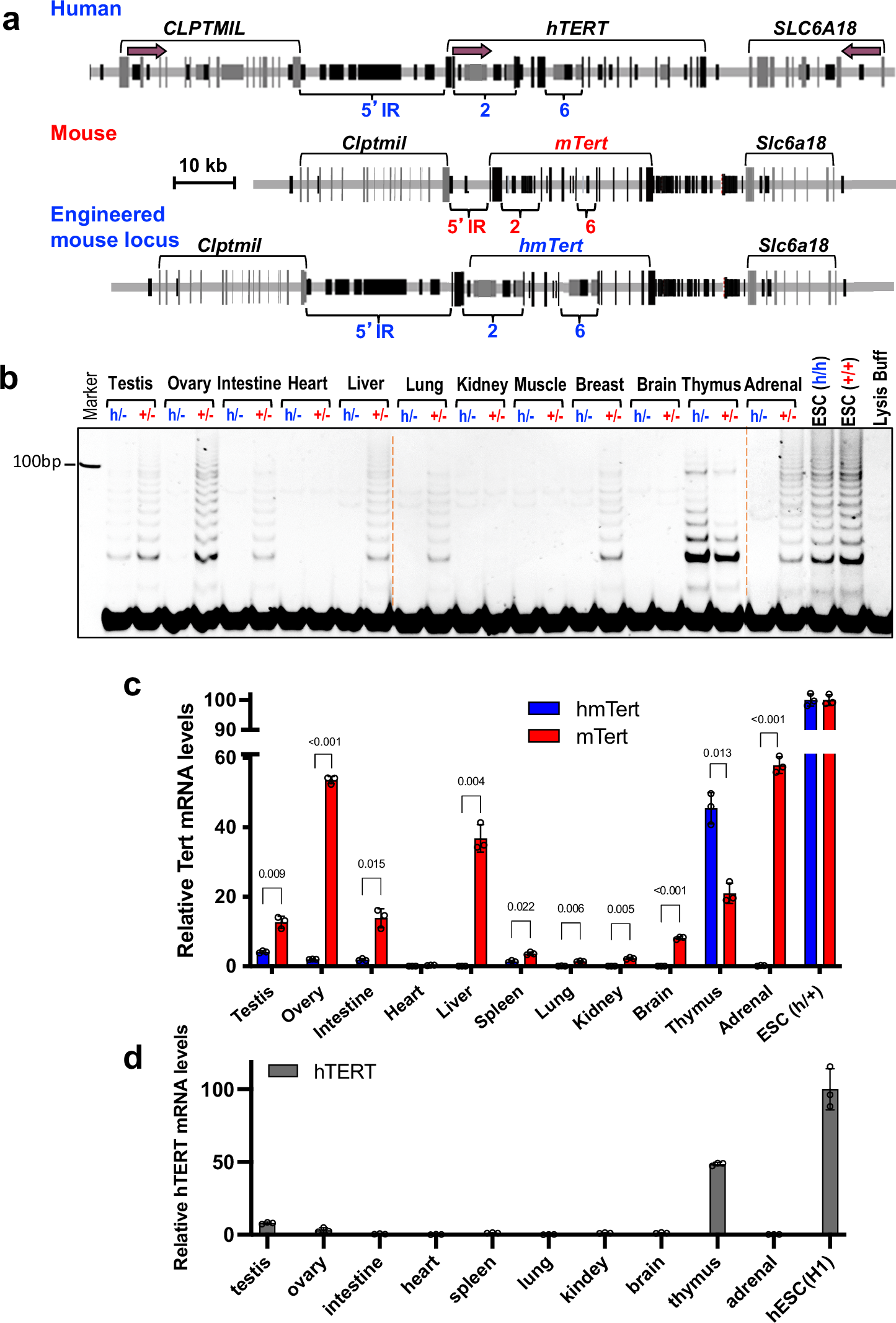2025-02-04 ワシントン州立大学 (WSU)
<関連情報>
- https://news.wsu.edu/press-release/2025/02/04/wsu-researcher-pioneers-new-study-model-with-clues-to-anti-aging/
- https://www.nature.com/articles/s41467-025-56559-6
テロメラーゼ遺伝子をヒト制御配列で改変するとマウスのテロメアがヒトの長さにリセットされる Modification of the telomerase gene with human regulatory sequences resets mouse telomeres to human length
Fan Zhang,De Cheng,Kenneth I. Porter,Emily A. Heck,Shuwen Wang,Hui Zhang,Christopher J. Davis,Gavin P. Robertson & Jiyue Zhu
Nature communications Published:04 February 2025
DOI:https://doi.org/10.1038/s41467-025-56559-6

Abstract
Telomeres shorten with each cell division, serving as biomarkers of aging, with human tissues exhibiting short telomeres and restricted telomerase expression. In contrast, mice have longer telomeres and widespread telomerase activity, limiting their relevance as models for human telomere biology. To address this, we engineer a mouse strain with a humanized mTert gene (hmTert), replacing specific non-coding sequences with human counterparts. The hmTert gene, which is repressed in adult tissues except the gonads and thymus, closely mimics human TERT regulation. This modification rescues telomere dysfunction in mTert-knockout mice. Successive intercrosses of Terth/- mice stabilized telomere length below 10 kb, while Terth/h mice achieve a human-like average length of 10–12 kb, compared to 50 kb in wildtype mice. Despite shortened telomeres, Terth/h mice maintain normal body weight and cell homeostasis. These mice, with humanized telomere regulation, represent a valuable model to study human aging and cancer.


